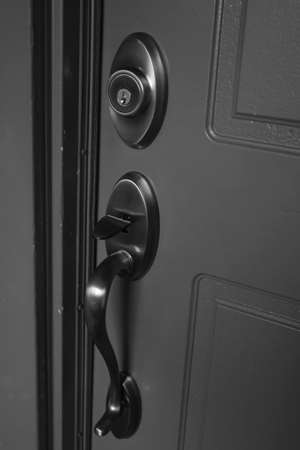Your Cart is Empty
Introducing RemoteLock | The Ultimate Universal Access Control Platform! Connect Your Hardware Today
Categories
Industry
What's the Difference Between a Latch and Deadbolt, and Which is Better?

The front door of an average home will typically feature two locks: The latch, which is a spring-loaded bolt that is found within the locking mechanism of the doorknob, and the deadbolt, which is usually located just above or below the doorknob. Each of these locks act as a means to secure the door and protect against intruders, but what are the real differences between them? Which one is better? Below is a more detailed explanation of how latches differ from deadbolts, as well as the advantages and disadvantages of each device.
Latches
Latch-based locking mechanisms are extremely common, with spring-loaded latches being the most prevalent type of device that is used within a typical lockset. Spring latches usually fall into one of two categories, as follows:
Latchbolts – These latches feature a spring-loaded bolt that is angled off at the top edge. As the door is closed, the angled side of the bolt will engage with the edge or lip of the strike plate (i.e., the hollowed-out plate fastened to the adjoining door frame), and the bolt itself will retract due to the pressure of contact with the strike plate. Once the bolt passes a certain point, it will fully extend and quickly lock into the strike plate due to the pressure being released from the spring, securing the door and holding it closed. Latches are designed to retract and disengage when someone turns the door handle to open the door.
Deadlatches – This device is a slight elaboration on the design of the basic latchbolt. Deadlatches feature what’s known as a guardbolt, which is a smaller cylindrical bolt positioned right beside the latchbolt. The guardbolt is designed to move in unison with the latchbolt up until the point where the latchbolt extends into the strike plate. At that point, the guardbolt remains in a depressed position against the strike plate, preventing the common burglary practice of “jimmying” or “shimming” the latchbolt. The way the guardbolt is positioned will not allow the latchbolt to be depressed by means of using a credit card or some other thin, flat tool.
Deadbolts
Deadbolts are thicker and heavier than spring latches, and they are not rounded or angled at the end. They are normally comprised of steel, bronze or brass, and they extend deeper into the door frame–typically about one inch–than spring latches. You can engage a deadbolt using a key or a turn knob, or by way of an automated motor such as with a keyless device (e.g., the Lockey M210). Similar to latches, deadbolts engage (or release) when the tumbler rotates to the proper position and the pins move into alignment. One of the major differences between deadbolts and latches is that latch-based locks have doorknobs or door handles, while deadbolt locks do not.
Latches vs. Deadbolts: Which One is Better?
Each lock type carries certain advantages; for example, a latchbolt will lock automatically, while most deadbolts require manual locking. On the other hand, deadbolts are widely considered to be stronger and harder to pick than latchbolts. One of the main disadvantages of a latch-based lock is its potential accessibility based on its positioning. For example, if there’s a nearby window, a burglar can just break the window and then reach inside and turn the doorknob to get into the house. Deadbolts can be a disadvantage because they require manual engagement, which can easily be overlooked by accident if you’re in a rush to get out the door. Many homeowners utilize a combination of deadbolts along latch-based locks to optimize the security of their residence.
The Most Effective Solution
The most effective route to take would be to experience the best of both worlds by investing in a keyless lock along with a keyless deadbolt. Both devices can work in unison to provide a double-dose of security for your home, and their convenience simply cannot be matched by traditional lock-and-key systems.
Keyless locks such as the Schlage FE595 Keypad Entry Flex Lock are a perfect example of a latch-based lock that is pick-proof, bump-proof, and requires a specific key code in order to gain entry into the home. Combine this device with a keypad deadbolt lock such as the Schlage BE365, and you’ll have an extra layer of protection that will serve as an excellent deterrent to would-be intruders.
Browse by Category
© 2025 GoKeyless. All rights reserved. Privacy Policy. Terms of Use. Powered by Brandography.



 Over 5 Million Locks Sold
Over 5 Million Locks Sold Trusted Since 2003
Trusted Since 2003 Help
Help
